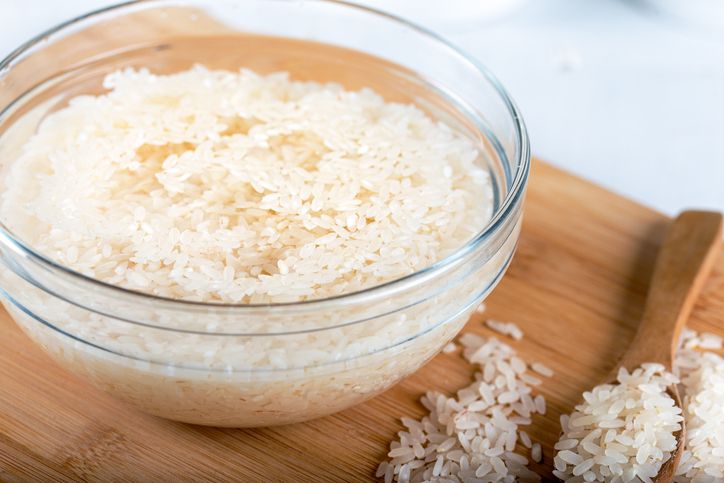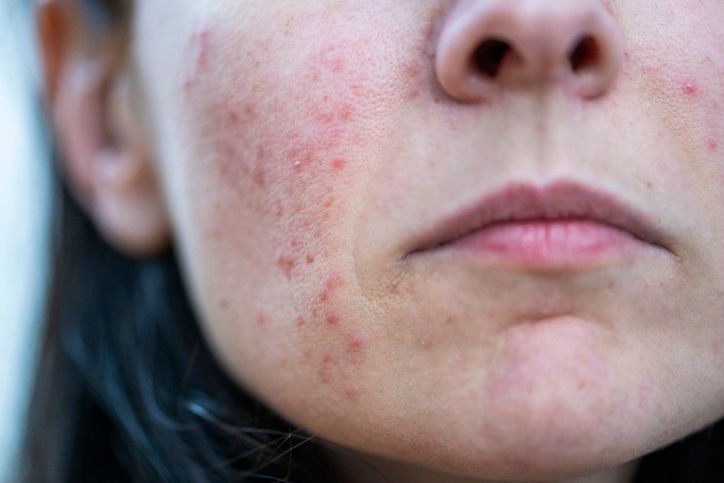Author: Natalie Ng|Updated: 16 June 2025
If you’ve noticed dark spots, uneven skin tone, or patches that just won’t fade, you’re probably dealing with some form of pigmentation. It often shows up after sun exposure, breakouts, or changes in your skin over time. A lot of products claim to lighten skin quickly, but many of them are packed with strong chemicals that can cause skin irritation, especially if your skin is on the sensitive side. That’s where natural ingredients come in. They’re a gentler way to treat pigmentation without making things worse. There are ingredients from fruits, plants, and natural sources that help fade dark spots, remove dead skin cells, and support a more even skin tone. Some work by calming the skin, others by encouraging fresh skin cells to surface. They won’t give overnight results, but they can make a real difference with regular use. If you're looking for natural ingredients to lighten pigmentation without harsh effects, the next section covers eight options worth knowing. Keep reading to see which ones work best and how they help brighten your skin.

Natural Ingredients To Lighten Pigmentation 1: Vitamin C-Rich Citrus Extracts

Citrus extracts support brighter, more even skin
Citrus fruits pack a powerful punch for treating pigmentation. The vitamin C in lemons, oranges, and grapefruits helps reduce melanin production, which causes dark spots and uneven skin tone. These ingredients are often used in natural remedies to lighten pigmentation and improve skin brightness over time. With regular use, citrus extracts can help effectively lighten skin and support a clearer, more even complexion.
Homemade citrus blends can support skin lightening
A simple treatment using citrus can be made at home:
• Mix 1 tablespoon of fresh lemon juice with 2 tablespoons of organic honey
• Apply the mixture to clean skin
• Leave it on for 15 minutes, then rinse
This blend helps exfoliate dead skin cells while delivering antioxidant properties to tired or pigmented areas. It’s important not to apply undiluted citrus juice directly, as it may cause skin irritation or increase sensitivity—especially for those with sensitive skin.
Sun protection is essential after citrus treatments
Citrus can make skin more sensitive to sun exposure. Always wear SPF 30 or higher after using citrus-based ingredients. This helps protect the skin barrier, prevents further pigmentation, and maintains the skin lightening effects of the treatment.

Natural Ingredients To Lighten Pigmentation 2: Kojic Acid From Fermented Rice

Kojic acid helps reduce dark spots from within
Kojic acid is a natural skin lightener that comes from the traditional process of fermenting rice into sake. During fermentation, certain byproducts form—one of which is kojic acid, known for its ability to treat skin hyperpigmentation and reduce the appearance of dark spots. It works by slowing down melanin production in the skin, helping pigmented areas fade more evenly over time.
This ingredient is especially useful if you’re dealing with stubborn pigmentation, such as age spots or acne scarring. It’s a gentle compound with noticeable results when used regularly. Kojic acid supports brighter skin without the need for synthetic skin lighteners or irritating chemicals.
Key benefits of kojic acid for skin lightening
• Helps treat pigmentation by targeting melanin production
• Works well with other natural skin brightening ingredients like vitamin C
• Can visibly lighten dark spots in 8 to 12 weeks
• Suitable for most skin types, including sensitive skin
• Available in pure powder or diluted serum forms
How to apply kojic acid safely
Kojic acid is most effective when used in your evening skincare routine. Start with a product that contains 1 to 2 percent concentration, then gradually increase if your skin responds well.
After cleansing, apply it before your moisturizer to give it time to absorb. Letting it sit overnight allows your skin to fully benefit from its lightening effect without being exposed to sun. Always use sunscreen in the morning, as kojic acid can make your skin more reactive to sun exposure.
Read More
Book Now to Experience
PicoCure Pigmentation Removal Treatment
1 Minute Self-Registration
Date should not be before minimal date

Natural Ingredients To Lighten Pigmentation 3: Licorice Root Extract
Licorice extract helps regulate melanin and calm the skin
Licorice root extract has been used in Asian skincare for centuries to address uneven skin tone and pigmentation. This natural ingredient targets the causes of dark spots by working at the level of melanin production. It gently helps reduce visible discoloration without irritating the skin, making it suitable for treating hyperpigmentation on sensitive skin types.
The key compound in licorice extract, glabridin, blocks the enzyme tyrosinase, which plays a central role in melanin pigment production. It also has anti inflammatory properties that help calm the skin, making it a good choice for areas prone to redness or irritation.
Benefits of licorice extract for pigmentation treatment
• Melanin regulation: Helps reduce the appearance of pigmented areas by blocking tyrosinase
• Anti-inflammatory effect: Soothes skin irritation and redness, especially after sun exposure or acne
• Antioxidant protection: Fights damage caused by free radicals, supporting skin health
• Gentle on skin: Safe for regular use on sensitive skin and pigmented skin equivalents
How to use licorice root extract
Licorice extract is commonly found in serums or spot treatments. Apply it to clean skin before heavier products like moisturizers or sunscreen. For daytime use, always follow with SPF to help protect against further pigmentation.

Natural Ingredients To Lighten Pigmentation 4: Papaya Enzymes for Natural Exfoliation
Papaya enzymes remove dead skin cells gently
Papaya contains a natural enzyme called papain, which helps break down proteins that trap pigmented skin cells on the surface. This makes it a natural exfoliant that supports skin lightening without causing skin irritation. By clearing away dead skin cells, papaya enzymes reveal fresher skin underneath and contribute to a more even skin tone.
This tropical fruit is especially helpful if you’re looking for a mild, plant-based method to brighten skin and treat pigmented areas caused by acne scarring or sun exposure.
How to use papaya for brighter, smoother skin
• Mash fresh papaya pulp and mix it with honey
• Apply the mixture to clean skin and leave on for 10 to 15 minutes
• Avoid the eye area when applying
• Use the treatment twice weekly for visible skin lightening effects
• Store any leftover mask in the fridge for up to 3 days
This method works well even on sensitive skin, as the enzymes lift away dull skin cells without disrupting the skin barrier. Gently massaging your face in circular motions during application can improve circulation and help the ingredients absorb more effectively.
Book Now to Experience
PicoCure Pigmentation Removal Treatment
1 Minute Self-Registration
Date should not be before minimal date

Natural Ingredients To Lighten Pigmentation 5: Mulberry Extract
Mulberry extract helps fade dark spots and improve skin tone
Mulberry extract, long used in Traditional Chinese Medicine, is known for its ability to reduce visible pigmentation. It works by slowing melanin production, which helps lighten dark spots gradually without irritating the skin. This makes it suitable for those looking to improve skin tone with a natural, plant-based option.
It’s a good choice if you're dealing with skin concerns like post inflammatory hyperpigmentation or age spots. In addition to its lightening properties, mulberry extract supports overall skin health with its antioxidant content.
Skin benefits of mulberry extract
• Dark spot fading: Helps treat pigmentation within 4 to 8 weeks
• Antioxidant support: Offers immediate protection against free radical damage
• Overall skin brightening: Begins to show results in 2 to 3 weeks
Application tips for best results
• Look for serums with 2 to 5 percent mulberry extract
• Apply to clean skin before layering heavier products
• Gently pat in with fingertips instead of rubbing
• Use morning and night for better skin brightening results
• Always follow with sunscreen during the day to help prevent new pigmentation

Natural Ingredients To Lighten Pigmentation 6: Plant Sources
Plant-based niacinamide helps even out skin tone
Niacinamide, a form of vitamin B3 found in plants like green vegetables, mushrooms, and whole grains, is a gentle solution for reducing skin hyperpigmentation. When used in skincare, it helps balance uneven skin tone by supporting your skin’s natural ability to regulate melanin.
Unlike stronger skin lighteners, plant-derived niacinamide works without disrupting the skin barrier. It also strengthens your skin while brightening it, making it ideal for treating dark spots on sensitive skin.
Skin lightening benefits of niacinamide
• Regulates melanin without bleaching or irritation
• Strengthens the skin barrier while supporting a brighter complexion
• Works well when paired with other natural ingredients like vitamin C
• Helps improve pigmented skin texture over time
• Suitable for treating hyperpigmentation on all skin types
How to apply niacinamide effectively
Start with products containing 2 to 5 percent niacinamide. Apply it to clean skin twice daily, after cleansing and before moisturizer. Regular use over 4 to 8 weeks can help lighten dark spots and improve overall skin brightness.
Book Now to Experience
PicoCure Pigmentation Removal Treatment
1 Minute Self-Registration
Date should not be before minimal date

Natural Ingredients To Lighten Pigmentation 7: Turmeric
Turmeric reduces pigmentation and soothes irritated skin
Turmeric has been used for centuries to treat skin pigmentation naturally. Its active compound, curcumin, helps brighten skin and reduce dark spots by calming inflammation and slowing melanin production. This makes it especially useful for areas affected by acne scarring, sun exposure, or uneven skin tone.
The antioxidant properties of turmeric also support skin health by protecting it from damage caused by external stressors.
How to use turmeric as a skin lightening treatment
• Mix 1 teaspoon of turmeric powder with 2 tablespoons of honey
• Add a small splash of lemon juice to boost the skin brightening effect
• Apply the mixture to clean skin for 15 to 20 minutes
• Use this topical treatment twice a week
• Do a patch test first, especially if you have sensitive skin
Turmeric may leave a slight yellow tint on the skin after rinsing, but it fades quickly and doesn’t cause irritation. With regular use, you can expect a more even skin tone and reduced dark spots within 4 to 6 weeks.

Natural Ingredients To Lighten Pigmentation 8: Alpha Arbutin From Bearberry Plants
Alpha arbutin targets dark spots with gentle brightening action
Alpha arbutin is a natural compound extracted from bearberry plants. It helps lighten pigmentation by blocking tyrosinase, the enzyme responsible for melanin production. This reduces the appearance of dark spots, melasma, and other signs of uneven skin tone without causing irritation, making it a safe choice for sensitive skin.
Unlike stronger treatments, alpha arbutin offers a more controlled and gradual skin lightening effect, making it ideal for those who want visible results without discomfort or harsh reactions.
Benefits of alpha arbutin for pigmentation treatment
• Slows melanin production to reduce dark spots and skin pigmentation
• Suitable for sensitive skin, with a lower risk of irritation
• Supports brighter skin within 4 to 8 weeks
• Works best in concentrations of 2 to 3 percent
• Pairs well with vitamin C and niacinamide to enhance lightening results
Safe ways to use alpha arbutin
• Do a patch test first, applying a small amount behind the ear or on the inner arm
• Use on clean skin once daily, increasing to twice daily as your skin adapts
• Apply a thin layer, pressing it gently into the skin without rubbing
• Always follow with moisturizer and use SPF during the day to prevent new pigmentation
Book Now to Experience
PicoCure Pigmentation Removal Treatment
1 Minute Self-Registration
Date should not be before minimal date

What Affects Pigmentation and Slows Skin Lightening
Common triggers that cause uneven skin tone
Before you choose natural ingredients to lighten pigmentation, it helps to know what causes pigmented skin in the first place. Several everyday factors contribute to melanin buildup, leading to skin concerns like dark spots, melasma, or post inflammatory hyperpigmentation. Understanding these triggers can help you prevent further pigmentation while treating what’s already there.
Factors that contribute to pigmentation
• Sun exposure: UV rays increase melanin production and deepen existing pigmentation
• Acne and inflammation: Breakouts and skin irritation can leave behind pigmented areas
• Hormonal changes: Pregnancy, birth control, and certain medications may trigger melasma
• Harsh treatments: Overuse of peels or strong skin lighteners can damage skin and slow recovery
• Slow cell turnover: As you age, your skin’s ability to shed dead skin cells naturally decreases, making pigmentation more visible

Simple Routine Using Natural Ingredients to Lighten Pigmentation
How to build a gentle routine with skin lightening effects
If you’re treating pigmentation at home using natural ingredients, keeping your skincare routine simple and regular can improve your results. This structure supports your skin health while helping to fade pigmented areas gradually.
Sample daily routine
Morning
• Cleanse with a gentle, non-stripping cleanser
• Apply a natural brightening serum (like licorice extract or niacinamide)
• Moisturize to protect the skin barrier
• Apply broad-spectrum SPF 30+ to prevent new pigmentation from sun exposure
Evening
• Cleanse skin to remove makeup, sunscreen, and dirt
• Use a natural exfoliant 2–3 times a week (papaya enzymes or products with lactic acid)
• Apply kojic acid or alpha arbutin serum
• Moisturize and let your skin recover overnight
You can also use natural masks with turmeric, green tea extract, or pure aloe vera gel once or twice a week to help brighten skin and soothe any irritation.

Enhance Results with PicoCure Pigmentation Removal Treatment
A non-invasive solution to support natural pigmentation care
While natural ingredients to lighten pigmentation can gradually fade dark spots and brighten skin tone, professional treatments can help boost results—especially for more stubborn or deeper pigmentation. The PicoCure Pigmentation Removal Treatment offers a safe, non-invasive option that works alongside your skincare routine to treat melanin buildup at its source.
This FDA-cleared and CE-certified treatment uses a combination of picosecond and nanosecond laser technology with four precise wavelengths (1064nm, 650nm, 585nm, and 532nm) to break down pigmented skin cells. Unlike traditional lasers, PicoCure delivers fast pulses that pass through the skin tissue almost instantly, reducing the risk of burns, skin irritation, or post-inflammatory hyperpigmentation.
How PicoCure works
• The nanosecond laser targets large and deep pigment clusters
• The picosecond laser further breaks these particles into fine dust-like fragments
• The shattered pigment is naturally expelled through your skin’s metabolic processes
• The laser energy also stimulates collagen production, improving skin texture and hydration
This layered approach makes the treatment suitable for dark spots, acne scarring, melasma, age spots, and uneven skin tone. It’s designed to support cell turnover without damaging the surrounding skin, making it ideal for sensitive skin types or areas prone to irritation.
Advantages of combining laser with natural skincare
• Boosts the effects of topical brightening ingredients like alpha arbutin, niacinamide, and licorice extract
• Speeds up visible results by breaking down stubborn pigmentation that surface treatments may not reach
• Improves skin health through collagen activation, which can help tighten pores and smooth uneven tone
• No downtime required – the skin stays intact with only minimal dryness post-treatment
• Safe for most skin types, including darker complexions often excluded from other laser treatments
PicoCure is often recommended in a course of 6 to 8 sessions for full results. During this time, continuing with your natural ingredients and proper sun protection can support long-term improvements and prevent new pigmented areas from forming.
Book your PicoCure Pigmentation Removal Treatment now and take the next step toward clearer, brighter skin.
New Beauty's PicoCure Pigmentation Removal TreatmentBook Now to Experience
PicoCure Pigmentation Removal Treatment
1 Minute Self-Registration
Date should not be before minimal date
FAQ
1. Can I lighten pigmentation caused by sun exposure naturally?
Yes, pigmentation caused by sun exposure—often seen as age spots or uneven skin tone—can be lightened using natural ingredients. Look for treatments that help reduce melanin production and remove dead skin cells, such as licorice extract, alpha arbutin, and pure aloe vera gel. These ingredients support brighter skin over time and are safe for most skin types. Always pair natural remedies with daily SPF to avoid making sun-induced pigmentation worse.
2. What are some natural remedies that treat melasma effectively?
Melasma is a common type of skin hyperpigmentation that can appear on the cheeks, forehead, or upper lip. Natural ingredients such as niacinamide, turmeric, and green tea extract may help lighten melasma without causing irritation. While they work more gradually than laser treatment, they are suitable for ongoing maintenance and can improve the appearance of pigmented skin equivalents over time.
3. How do natural exfoliants help with pigmentation?
Natural exfoliants like papaya enzymes and ingredients containing alpha hydroxy acid or lactic acid can remove dead skin cells that trap melanin near the surface. This process supports regular cell turnover and helps fade dark spots. Exfoliation also improves the absorption of skin lightening ingredients, making your routine more effective. Use gentle exfoliants 1–3 times a week, depending on your skin sensitivity.
4. Can green tea or black tea help reduce skin pigmentation?
Yes, both green tea extract and fresh black tea leaves have antioxidant properties that can support skin lightening. Green tea helps calm inflammation and regulate melanin production, while black tea has been used in home remedies to treat pigmented areas. Applying cooled tea bag compresses or using products with tea extracts may reduce the appearance of dark spots and brighten skin tone over time.
5. What causes pigmentation to keep coming back after it fades?
Pigmented areas can return due to several reasons, including sun exposure, hormonal shifts, and using products that irritate the skin. Skipping SPF or using harsh exfoliants can also trigger new pigmentation. To maintain a more even skin tone, use antioxidant-rich ingredients like vitamin C and licorice extract regularly, protect your skin barrier, and avoid picking at acne or inflamed spots, which may cause post inflammatory hyperpigmentation.
Recommended Articles
COPYRIGHT© NEW BEAUTY MANAGEMENT LIMITED 2025. ALL RIGHT RESERVED.




